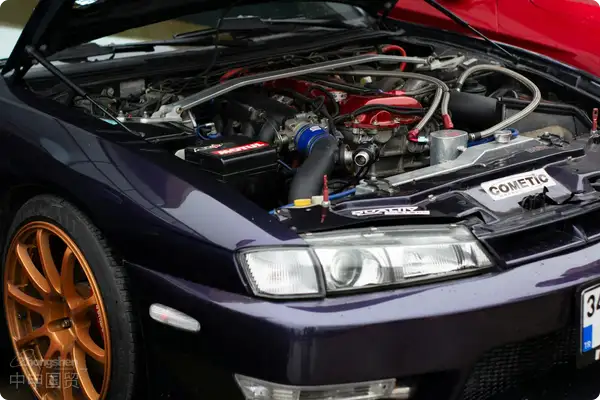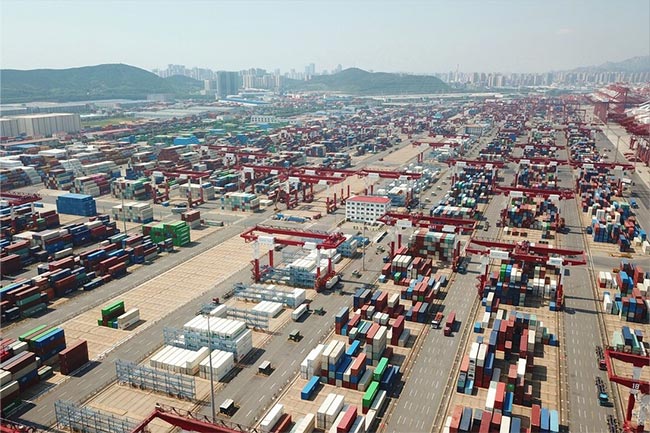- Shanghai Zhongshen International Trade Co., Ltd. - Two decades of trade agency expertise.
- Service Hotline: 139 1787 2118

Professional Interpretation: Automotive Window Glass and Accessories in ChinaImport RepresentationPractical Guide
(Author: 20 years)foreign tradeservice expert with 20 years of industry experience, this article will systematically analyze the core points of clothingExport RepresentationSenior Account Manager
With the deep integration of the global automotive industry chain, China, as the world's largest automotive consumer market and manufacturing hub, has seen a continuous rise in the import demand for high-end automotive glass and accessories. As a professional with 20 years of experience in the field of foreign trade agency, this article will systematically analyze the core processes, key risk control points, and industry trends of importing automotive glass and accessories, helping enterprises efficiently complete their import business layout.
Contents
ToggleIndustry Status and Market Opportunities
1.Demand drivers:
- New energyThe trend of automotive lightweighting is driving increased imports of high-value-added glass products, such as heat/sound insulation glass and HUD (Head-Up Display) glass.
- The domestic high-end vehicle maintenance market remains heavily reliant on original equipment manufacturer (OEM) glass.
- Amid fluctuations in the global supply chain, OEMs have an increased demand for diversified supplier reserves.
2.Major Import Source Countries:
- Europe(Germany, France): Leading technology companies represented by Saint-Gobain and Pilkington;
- North America(U.S., Mexico): Companies such as Corning and AGC dominate the high-end glass market;
- Asia: Japan's AGC and Nippon Sheet Glass dominate the high-precision glass processing market share.
II. Comprehensive Analysis of the Entire Process for Importing Automotive Window Glass
1. Product Classification and Compliance Pre-assessment
- HS Code: It is essential to accurately distinguish between "laminated glass (7007.11)" and "tempered glass (7007.21)" due to the significant difference in tariff rates (approximately 45% for the general rate vs. 25%).
- Technical Standards:
- European Union: ECE R43 certification (light transmittance ≥70%, impact resistance test);
- United States:DOT certification (fragment state, environmental aging resistance);
- China: GB9656-2021 (must pass3Ccertification).
Risk Warnings: Non-standard products require prior application for the "Exemption Certificate for Compulsory Product Certification."
Supplier Qualification Review
- Core validation documents:
- Original Manufacturer Authorization Letter (to avoid gray market sources);
- Quality Inspection Report (must include key indicators such as UV transmittance and shot bag impact resistance);
- It is recommended to verify through the following methods:Ming (to avoid anti-dumping risks, such as Turkey's glass anti-dumping duty as high as 36.26%).
3. International LogisticsScheme Design
- Packaging Requirements:Use A-frame + EPE shockproof film + wooden box reinforcement (single box load-bearing ≤ 1.5 tons) to avoidMaritime TransportationBroken on the way.
- Transportation optimization:
- Full container load (FCL) transportation: Priority is given to 40HQ high cube containers (with a volume of 67m3, capable of loading 600-800 pieces of windshields);
- LCL Solution: For small batches of repair parts, LCL shipping to Shanghai/Ningbo Port is recommended, reducing logistics costs by 30%.
4. Customs Clearance and Tax Management
-
Tariff Cost Calculation:
進口關稅=完稅價格×關稅率(普通稅率45% / 最惠國稅率10%) 增值稅=(完稅價格+關稅)×13% (注:東盟自貿協定可申請0關稅,需提供FORM E原產地證) -
Risk Prevention in Cost Appraisal: For related-party transaction imports, prepare the "Royalty Agreement" and a price composition explanation in advance.
5. Warehousing and Distribution Strategy
- Bonded warehousing: Utilize the "batch release from the zone, centralized tax payment" model of the comprehensive bonded zone to alleviate financial pressure;
- Terminal distribution: Partnering with JD Logistics and Zoomlion, we have achieved a 48-hour direct delivery from "port-regional warehouse-4S store."
III. Common Issues and Solutions
Case 1: Return Due to Certification Non-Compliance
A company imported EU ECE-certified glass without obtaining the out-of-CCC-catalog identification, leading to the customs requiring its return shipment.
Solutions: Establish a "Pre-certification Checklist" and collaborate with third-party organizations (such as SGS) to confirm compliance pathways in advance.
Case 2: Claim for Cargo Damage Dispute
After the glass arrived by sea, the breakage rate exceeded 15%, making it difficult to determine liability.
Solutions: Insure under "Institute Cargo Clauses A" + additional "Breakage of Packing Risk," with the claim success rate increasing to 90%.
IV. Industry Trends and Upgrades of Agency Services
1.Technological Innovation:
- The import volume of smart glass (electrochromic, photochromic) has increased by 25% annually, requiring attention to new FDA and RoHS testing items;
- The surge in imports of panoramic glass has spurred demand for specialized transport vehicles (loading angle ≤15°).
2.Supply chain reconstruction:
- Nearshore procurement on the rise: Mexican factory glass import cycle shortened to 25 days (previously 60 days from Europe).
- Digital customs clearance: AI-powered intelligent classification via the "Single Window" system boosts declaration efficiency by 40%.
3.Value Extension of Agency Services:
- Offer VMI (Vendor Managed Inventory) supplier inventory management to achieve "zero inventory" procurement;
- Integrate overseas warehouses + domestic bonded warehouses to build a 48-hour emergency supply network.
Conclusion
The import of automotive glass has transitioned from traditional trade to a competition in comprehensive services encompassing technical compliance, supply chain resilience, and digital collaboration. Choosing an agency service provider with a global compliance database, a risk management system, and the ability to integrate resilient supply chains will become a core advantage for enterprises in capturing the market.
(Note: The data in this article is as of Q3 2023. Please refer to the latest regulations for specific operations.)
Authors Introduction: 20 years of foreign tradeimport and exportAgency operations expert, leading the completion of over 500 batches of automotive parts import projects, serving top-tier clients including Tesla's supply chain and GAC Group.
Related Recommendations
Contact Form
Category case
Get in Touch
Email: service@sh-zhongshen.com
Related Recommendations
Contact via WeChat

? 2025. All Rights Reserved. Shanghai ICP No. 2023007705-2  PSB Record: Shanghai No.31011502009912
PSB Record: Shanghai No.31011502009912








